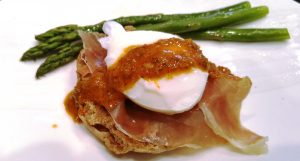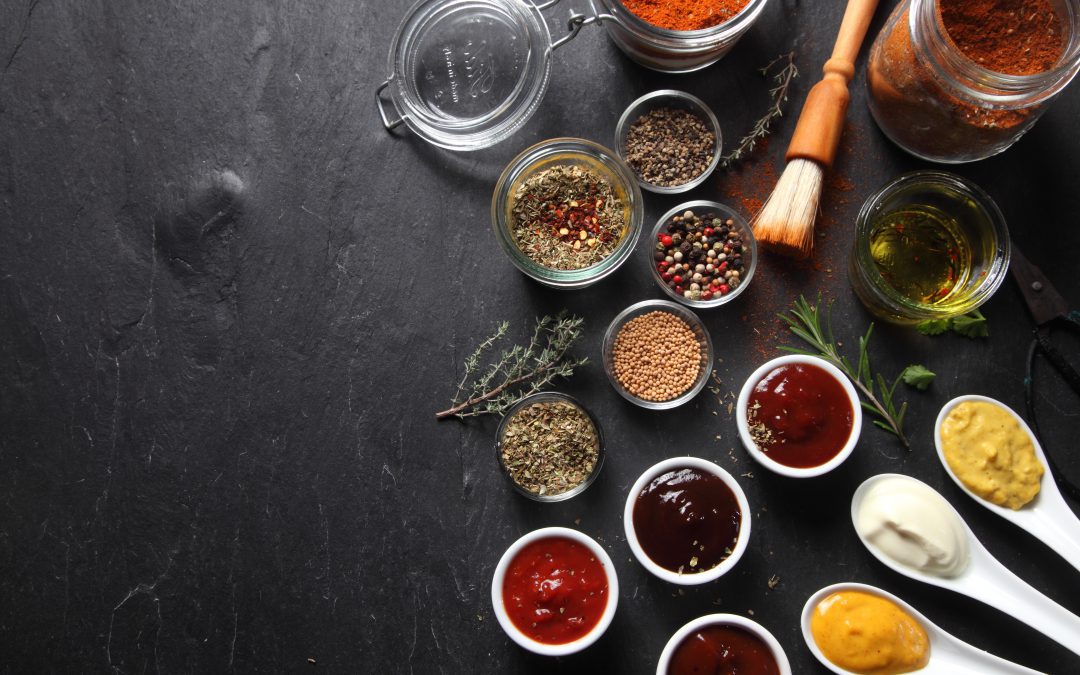Ask ten people about marinades, dry rubs, brine, and finishing sauces – and you’ll get at least five different answers and five blank stares. Even among professional chefs there is plenty of confusion on how and when to use a marinade – and why sometimes it would be better to use a dry rub or a brine. Then, should you sauce or not?
So, we thought you’d like to hear about some of the basic facts behind using each of these techniques so important for grilling and roasting. In this article, we run through the best techniques for using finishing sauces (article updated Aug 2021).
Finishing Sauces
In one sense, this is the easiest and quickest technique to use to add flavor to a meal, especially if you use a commercial sauce. You can call almost anything liquid a sauce – but you usually want something that is a bit thickened, and not running all over the grill.
The most common finishing sauce in the USA is barbecue sauce, familiar to almost everyone. The real trick is to know at what stage to use any sauce. For example, even a rookie griller would know that you don’t put a sugary barbecue sauce on food before it has been cooked through, unless you want a burnt sugar mess.
There are lots of great articles which detail how to make a great finishing sauce (for a nice study of the 5 base sauces used in French cooking, check out this article on the Kitchn.com website). In fact, the art of creating a great finishing sauce is at the center of serious culinary training, and is often considered one of the greatest tests of a chef’s skill. For this article, we’ll take a simple approach.
When grilling, pan searing, or broiling, there is really only two types of sauces you need consider: sauces that are used while cooking, and sauces that are served after cooking. We’ve already used the barbecue sauce example, where you need to brush the sauce onto the meat about 5-10 minutes before taking the meat off the grill. This allows the sauce to caramelize without burning.

Eggs w/Spanish Romesco
Classic finishing sauces for grilled or broiled meats include wine sauces, nut-based sauces such as pesto and Romesco, butter and/or cream-based sauces, and tomato sauces. We like fresh pesto sauce for its brilliant herb flavors, and versatility – we use it on anything grilled or broiled (If you are interested in recipes for pesto sauces, check out our article HERE). Butter-based sauces can be a bit tricky, but are quick to make once you have the technique down (Check out the article at Fine Cooking). Below you’ll find a recipe for a quick, classic Bearnaise sauce, and a mushroom red wine sauce, which are perfect for steaks, chops, or chicken.
We also want to point you to a great article posted by posted by Yannick and Ilse from Culinary Ambition that has a great recipe and a bit of history about one of the classics -Bearnaise Sauce (click HERE).
If you’re not into DIY, then there are many delicious commercial alternatives, including our own brand of Serious Foodie Sauces (click HERE).
Easy, Fool Proof Béarnaise Sauce
- 1/4 cup white wine vinegar
- 1/2 cup dry white wine
- 3 sprigs tarragon, leaves finely minced, stems reserved separately
- 3 sprigs chervil, leaves finely minced, stems reserved separately (optional; if not using add an extra sprig of tarragon)
- 1 small shallot, roughly chopped
- 1/2 teaspoon whole black peppercorns
- 2 egg yolks
- Kosher salt
- 1 1/2 sticks (12 tablespoons) unsalted butter
- Combine vinegar, wine, herb stems, shallots, and black peppercorns in a small saucepan. Bring to a simmer over medium-high heat and lower heat to maintain a gently simmer. Cook until reduced to about 1 1/2 tablespoons of liquid, about 15 minutes. Carefully strain liquid through a fine mesh strainer into a small bowl, pressing on the solids with the back of a spoon to extract as much liquid as possible.
- Combine vinegar reduction, egg yolk, and a pinch of salt in the bottom of a cup that barely fits the head of an immersion blender. Melt butter in a small saucepan over high heat, swirling constantly, until foaming subsides. Transfer butter to a 1-cup liquid measuring cup.
- Place head of immersion blender into the bottom of the cup and turn it on. With the blender constantly running, slowly pour hot butter into cup. It should emulsify with the egg yolk and vinegar reduction. Continue pouring until all butter is added. Sauce should be thick and creamy. If it is thin and runny, transfer to a large bowl set over a pot of barely simmering water. Whisk constantly and vigorously until sauce is thickened. Season to taste with salt. Whisk in chopped tarragon and chervil. Serve immediately, or transfer to a small lidded pot and keep in a warm place for up to 1 hour before serving. Béarnaise cannot be cooled and reheated.
Easy Mushroom Red Wine Sauce
- 3/4 pound cremini mushrooms, thickly sliced, or other varieties such as oyster mushrooms (we also like to throw in a few Shiitake mushrooms to add a bit more interest)
- 2 tablespoons olive oil
- 2 cups full-bodied red wine, such as Merlot, Chianti, Zinfandel or Rioja
- 1 medium shallot, minced
- 1/2 cup veal or chicken stock
- 6 tablespoons cold unsalted butter, cut into small pieces
- Salt and freshly ground pepper
- In a large skillet, add the olive oil and 1 tablespoon of butter; saute the mushrooms over high heat for about 10 minutes, until softened and fragrant. Salt and pepper to taste. Remove the mushrooms.
- Lower the heat to medium. Add the shallots (and more olive oil, if necessary). Saute for 1 minute, then add the red wine. Reduce to about 1 cup (about 10 minutes), then add the stock. Boil over high heat until reduced again to 1 cup. Take the pan off the heat, then whisk in the remaining butter to make a thickened sauce. Season with salt and pepper and serve.



